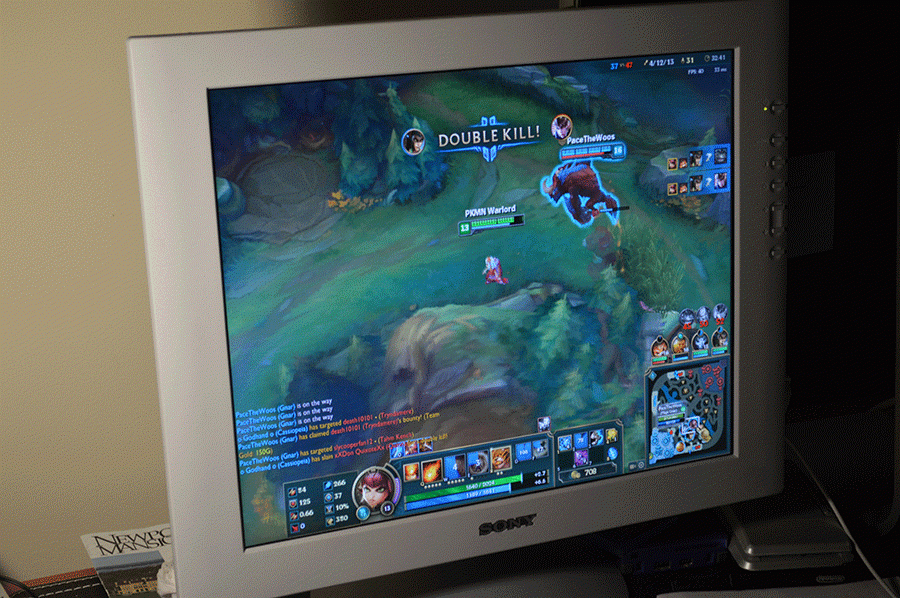Violence in video games does not equate to real world violence
Research shows that videogames are not linked to criminal violence but may be linked to increasing aggression.
(Alex Beckman’s opinions are not necessarily those of the The Smoke Signal or its staff. The Smoke Signal welcomes dissenting opinions via Op Eds or letters to the editor.)
Violence in video games is not the main cause for real world violence. It accounts for a fraction of a percent, if any, of the violence we see in the world from teens and young adults.
Violence in video games can theoretically be an inspiration for some people to commit crimes, but is not a direct cause. Most of the blame is placed on games such as Call of Duty, Grand Theft Auto (GTA), and Mortal Kombat. What do these games have in common? Violence, and lots of it, but let’s take a look at the facts. Hundreds of millions of people play games from the Call of Duty franchise, tens of millions play Mortal Kombat, and who knows how many play GTA.
How many of these people commit violent crime? 1%. Maybe.
The American Psychological Association (APA) put together a task force to address the topic of whether violence in video games is connected to violent crime in the real world, analyzing studies done between 2005 and 2013.
“Scientists have investigated the use of violent video games for more than two decades but, to date, there is very limited research addressing whether violent video games cause people to commit acts of criminal violence,” said task force chair Mark Appelbaum. “However, the link between violence in video games and increased aggression in players is one of the most studied and best established in the field.”
If you pay attention to this statement, it says that exposure to violence in video games may be linked to increased aggression, but not actual violence. This means that just because an individual may feel more aggressive does not mean that they will commit a violent crime.








Jennifer Peshansky • Apr 26, 2016 at 12:06 pm
While video games do not directly cause violence, some do perpetuate mindsets and prejudices that can, eventually, lead to violence. One of the most prominent examples is the violence against women in many video games, including Grand Theft Auto. Many of these games show situations where the woman is captured and the male protagonist has to save her, known as the damsel in distress trope. These women are not necessarily powerless from the start, but are then placed into situations where they are powerless to save themselves by the plot.
Worse, there is a trope known as the “woman in the refrigerator” where the woman is murdered simply to provide emotional distress and/or motivation for the male character’s story. Sometimes these tropes are combined, like a wife getting murdered and a daughter kidnapped, or a woman being murdered with her soul captured, prompting the male character to go on a quest to release it. But the worst of these is when the male protagonist has to kill the woman, for any reason. Sometimes she’s been turned into a monster, and begs him to kill her. Sometimes she fights against him in a boss battle, and he must defeat her, either so that she turns good again, or simply dies.
These tropes perpetuate the idea that it is, in some situations, okay to beat up a woman for her own good. Whether intentionally or unintentionally, the idea that this is okay is planted in players’ minds. Some, of course, would still never harm a woman. But having this message shown to them, again and again, in the media they play constantly, makes smaller things seem okay – such as insulting women, or making jokes about their gender stereotypes. In Grand Theft Auto III, at the end, Maria Latore is talking about stereotypically girly things, so the man who just saved her gets so annoyed that he murders her, and this is supposed to be a “joke.”
In the end, video games do not exist in a vacuum, and players are not only seeing violence, but being encouraged to perform it. When this is a fight in equal footing, with two characters or more fighting against each other and with each one fighting back, it is not a problem. But when very specific groups of people, such as women, are shown again and again to be victimized and stripped of their power, this enforces the already negative thought processes that people have about women, and encourages dating violence, sexism, and misogyny.